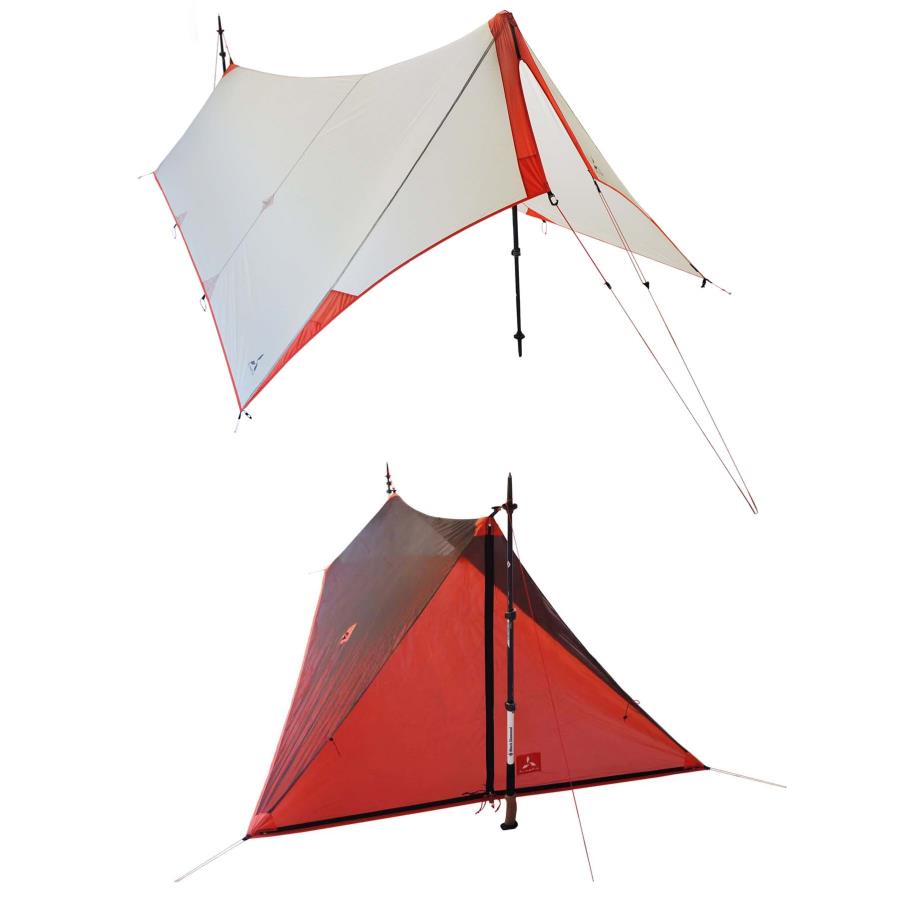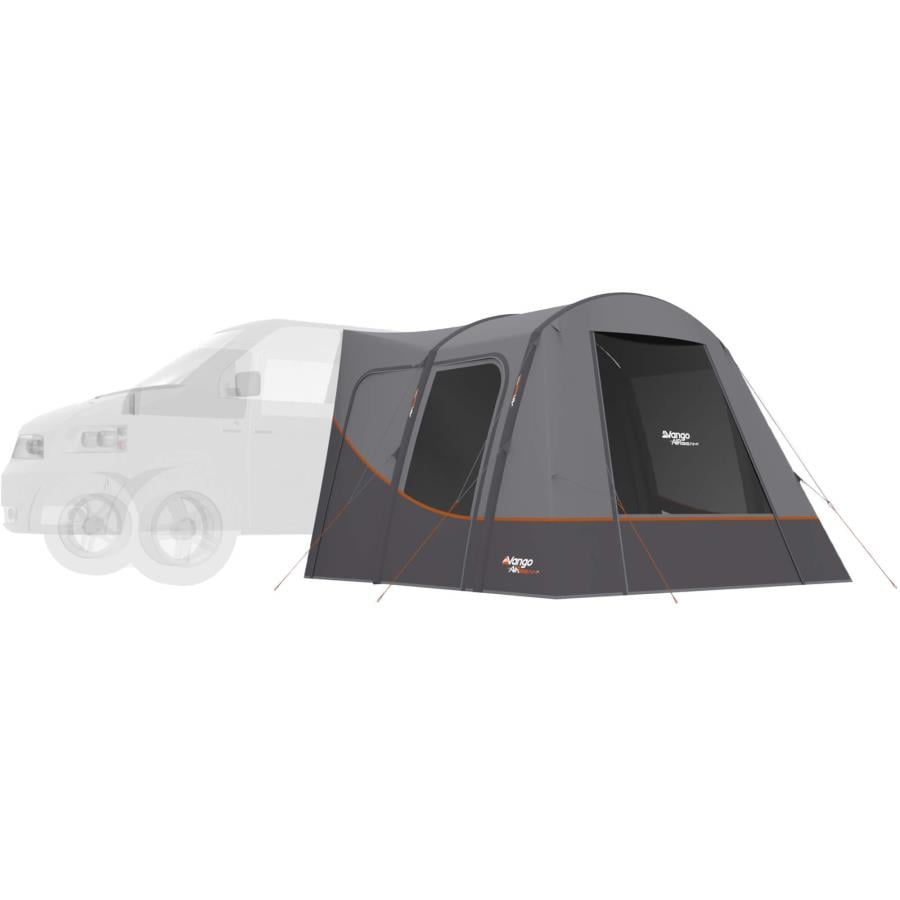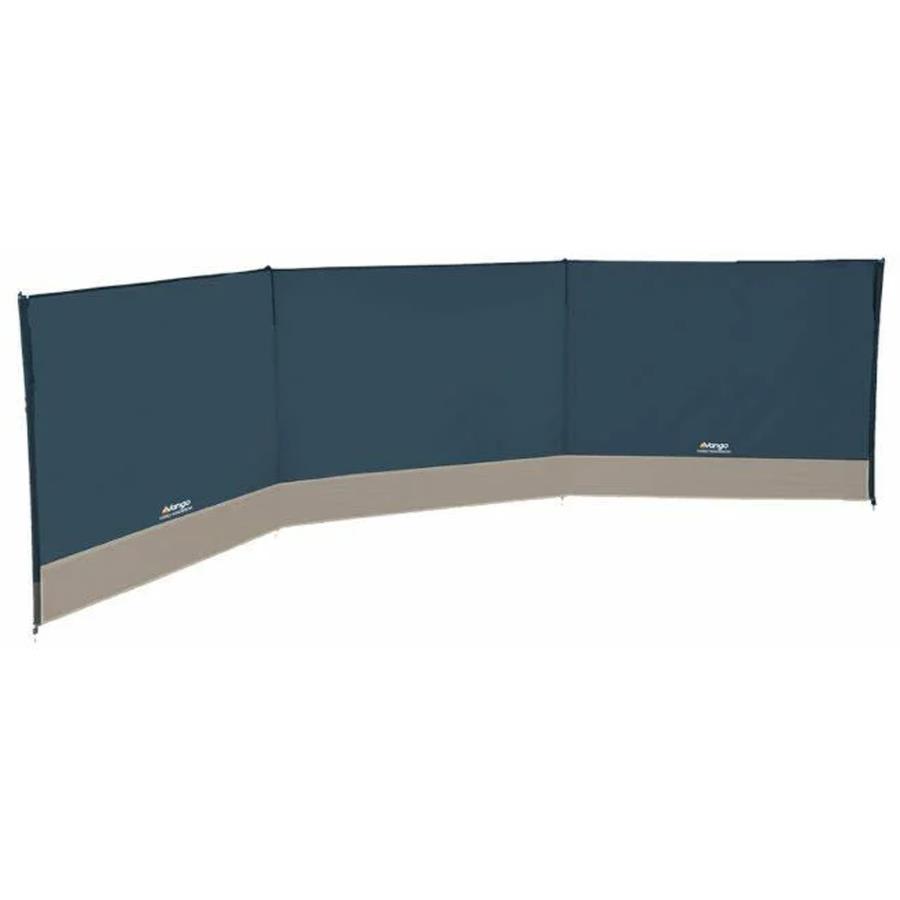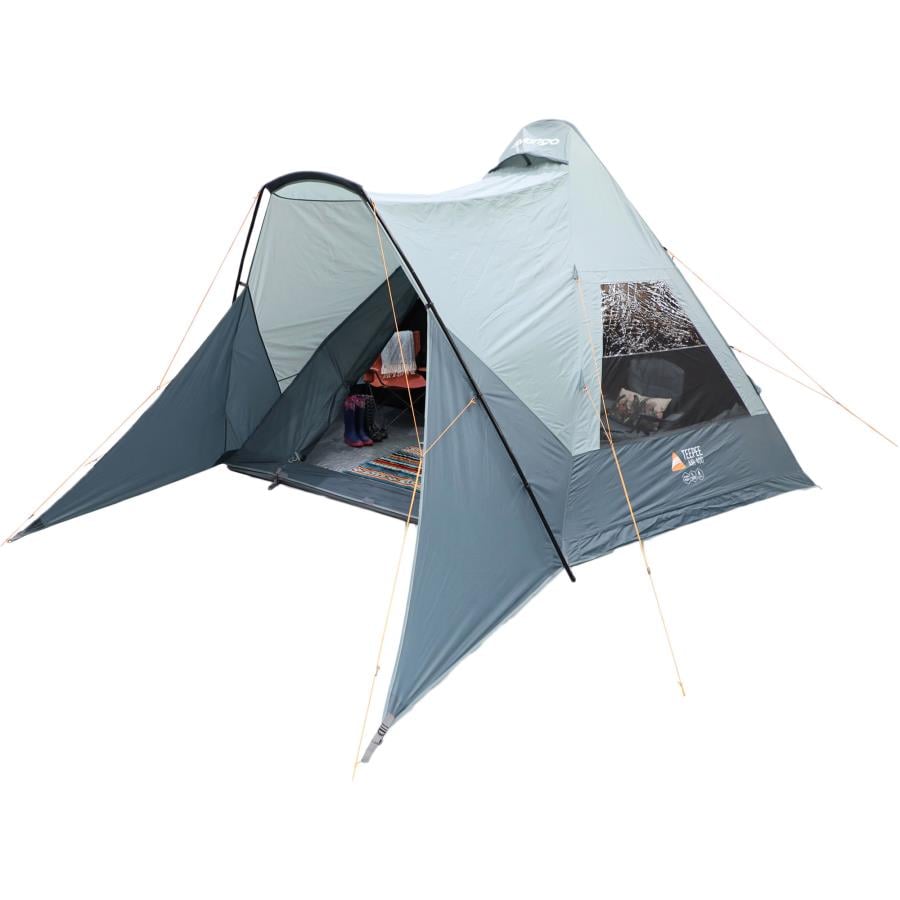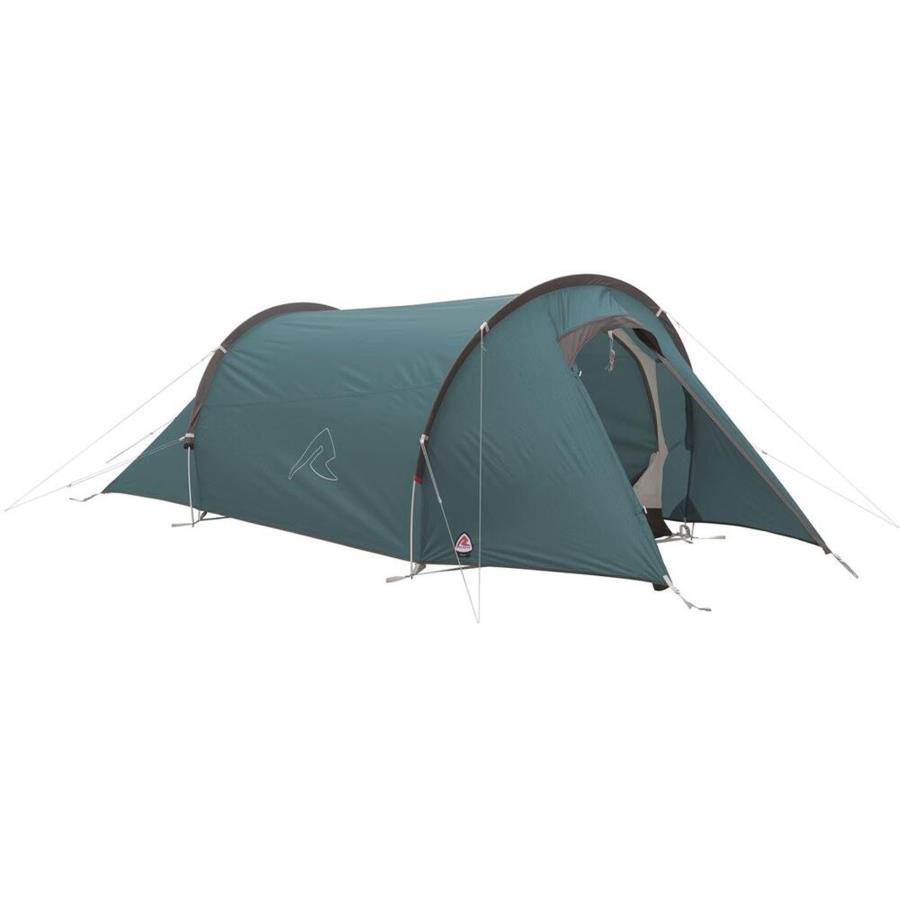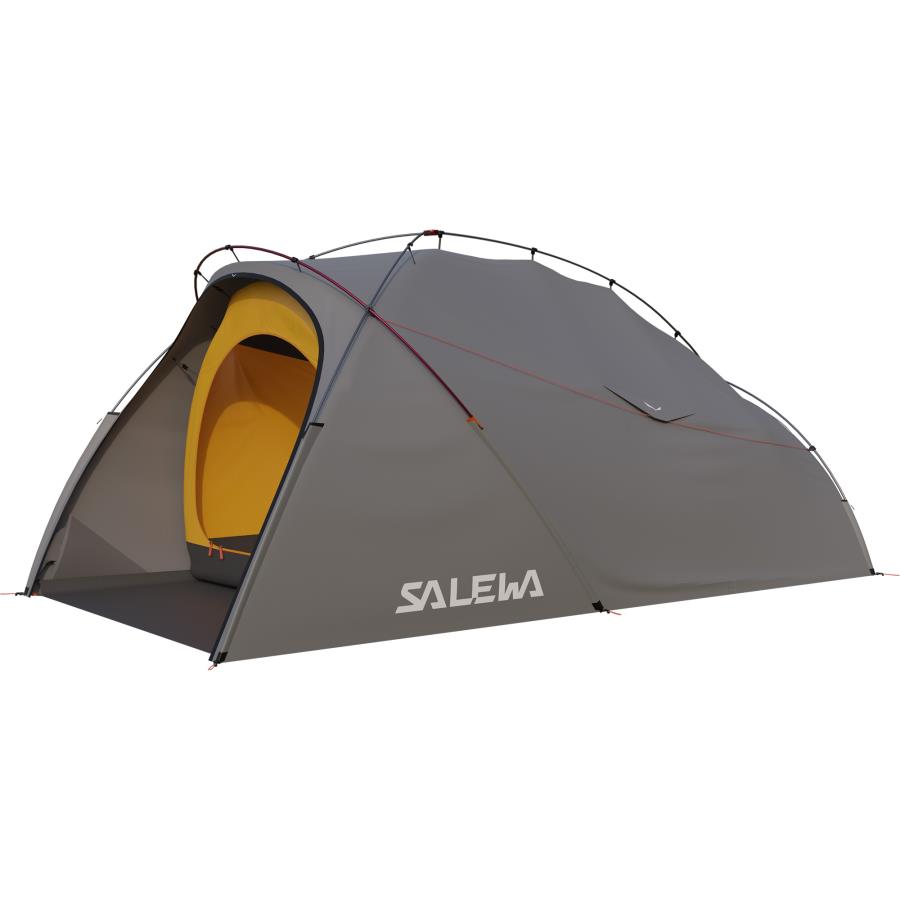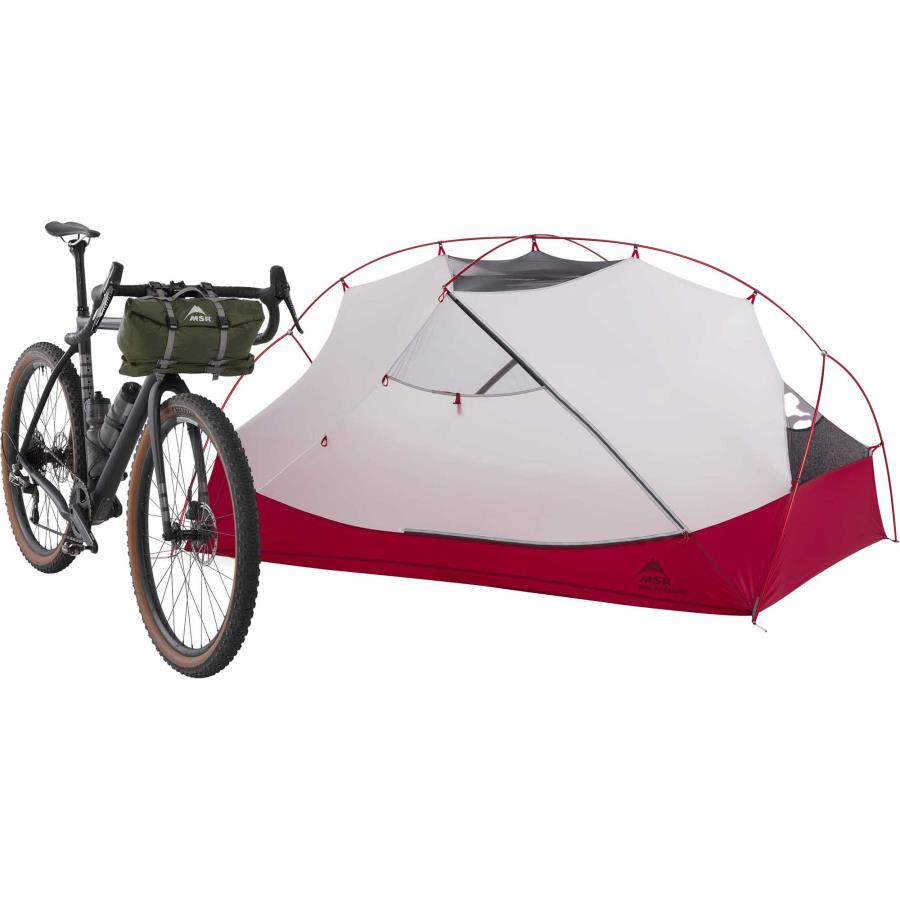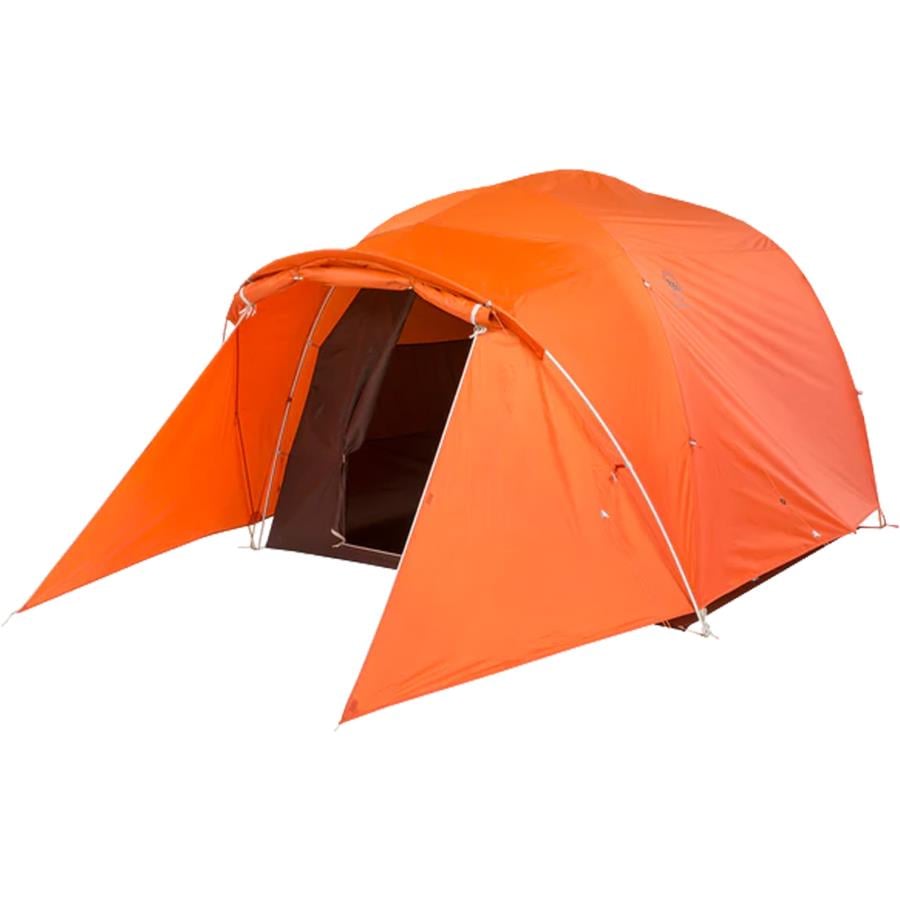An Absolute Guide to Camping & Buying a Tent
.webp)
A camping trip can be a rewarding experience. From the sheltered woodlands of the New Forest to the windswept peaks of the Lakes and Highlands - wherever your destination it’s important to go prepared.
Picture a sea of mud-bound tents abandoned after a rainswept music festival. Chances are, few of those tents were up to offering any serious level of protection in poor weather. A cheap tent might look the part but if the weather turns you’ll soon find yourself on the soggy end of the sleeping bag with a howling wind doing its best to turn you into a tumble-weed.
Camping should be about fun; not running around in the dead of night searching out rocks to anchor your leaking tent in place. That’s why we select only the highest quality brands to ensure you spend your valuable free time enjoying all the outdoors has to offer.
Whether you’re a first-time buyer or a seasoned camper looking for a little help to make your choice, this quick guide is designed to break down a few key concepts to better inform your decision.
Buying a tent need not be daunting - follow our advice and you will not go wrong!

The main parts of a tent typically include the body or canopy, poles, rainfly, guy lines, stakes, and a carrying bag. The body or canopy is the main fabric structure, supported by poles that provide the tent's frame, while the rainfly is an additional waterproof layer that goes over the body for extra protection. Guy lines are used for stabilisation and to secure the tent in place, while stakes are driven into the ground to anchor the tent.
There’s a wide range of tent styles available today, all with their own distinctive design and purpose. In simple terms, you can break them down into two groups: lightweight tents for trekking or cycle tours, and bulkier touring tents better suited to destination camping and transportation by car or short approach hikes. Lower weight tents are practical; geared to protect you from the elements but often with fewer features. Larger berth base shelters tend to carry more frills (such as porch areas) with a heavier duty fabric which in turn increases their weight and size.
A classic design that remains popular across a range of outdoor uses. These typically feature a three pole design consisting of a main ridge pole with supporting uprights at either end. Their shape makes them incredibly stable in most conditions. Although for a quiet night, if camping in exposed areas, it’s a good idea to avoid pitching with the tent’s length facing into the wind.
Great for pitching in extreme locations or exposed elevations. The Geodesic design finds increased strength and stability by crossing poles to create a stronger supporting framework. This works to direct external forces - such as wind and snow accumulation - across the entire surface of the tent allowing it to stand up to higher stress. They come in a variety of shapes and sizes. From lower-weight 3-season trekking tents to 4-season base camp style shelters with increased living space to ride out periods of bad weather. These tents often fall into a higher price range owing to their use of higher-grade materials and extreme weather protection.
Next to the classic A-frame in popularity comes the dome style tent. Remember that muddy festival field? You’ll no doubt find the majority of those abandoned tents are domes. The dome shape is simple and convenient to pitch (using two or three collapsible poles) and offers a decent amount of headroom and sleeping space. Domes are a great all-round tent for a quick break – from car camping to short treks. The ease at which they can be pitched is countered by a degree of instability in high winds. Pitching in bad weather? Be sure to stake out those guy-lines for extra security.
Tunnel tents generally comprise a series of poles (sometimes as little as 1) arranged in hoops along the shelter’s length to form a tunnel-like structure. This design provides a greater vertical angle to the walls allowing more headroom and interior space. They often include an extended porch area for added storage, meal prep and living space. The added space can come with a higher price-tag though the comfort and practicality they afford is well worth it. When pitched correctly (making use of guy-lines) they can be incredibly stable. Without proper pitching, the pole alignment can leave them susceptible to wind. A great design that affords room but be sure to secure them in exposed terrain.
For the outdoor purist who likes to travel with the minimum of weight. A bivy offers a uniquely lightweight and low profile sleeping shelter - often with just enough room for you and a pack. They pitch low to the ground making them less vulnerable to wind. Their small footprint makes them great for overnighting in tight spots – ideal for alpine use. These are great shelters for adventure racers, climbers and thru-hikers looking for minimal pack weight. They make great emergency shelters when hiking into the unknown and for side trips from base camp. Small, stable and incredibly lightweight what they lack in space they make up for in pack-size and trekking convenience.
A classic design, the Tipi style shelter typically finds favour with larger groups and families looking for comfort and space over multi-day camping trips. A single centre pole (often offset to leave the living space free from obstruction) gives the tent that recognisable ‘tipi’ shape while supporting guy-lines provide tension to the walls. A little larger and heavier than an equivalent berth trail tent, tipis are ideally suited to static base camps. The extra headroom, increased floor space, and in some instances, chimney ports for stoves make them great for larger groups and families looking for that unique outdoor experience.
The spacious design makes them particularly useful for those seeking shelter on a rainy day. Excellent summer tents for those looking for a more traditional style outback tent.
Like their design, the construction of modern tents varies. That bargain brand dome might hold up for a weekend in the sun but subject that same low-quality fabric to a torrential downpour and you’ll quickly understand the benefits of a higher price point in staying dry.

When choosing a tent it’s important to take into consideration the location (esp. altitude), season and weather you’re likely to encounter. A tent that holds up to light summer showers in a sheltered woodland setting can react differently when subjected to a sustained downpour on an exposed mountainside.
A tent’s waterproofness, also known as ‘hydrostatic head’ gives you an idea as to the level of water-resistance the outer flysheet can handle. In most cases, a flysheet will feature a lower level of waterproofing compared to the floor or groundsheet which is subject to continuous pressure and contact with ground moisture.
The lowest legal limit to attain a ‘waterproof’ rating is 1’000 mm. The average rating for a tent’s outer flysheet is around the 3’000 mm mark – although some makes will range down to 1’200 mm. Don’t be put off by a lower rating as higher quality fabrics and waterproof treatments can provide incredibly storm-proof tents (more on this below). Put simply, the higher the waterproof rating the longer the tent will repel water in a sustained downpour. A flysheet with a rating of over 3’000 mm will see off the most persistent downpours with a groundsheet of 10’000 mm easily keeping ground moisture at bay.
When it comes to lighter nylon tents the most common methods of waterproofing are coatings of polyurethane (PU) or more expensive silicone (SI). Though cheaper, a PU coating diminishes over time. The chemical composition is susceptible to sunlight and weather, gradually breaking down to become less effective. Tents featuring a PU based coating will benefit from reproofing to maintain their water repellency.
Tents featuring silicone elastomer coatings find use in higher performance and lighter-weight shelters. A costlier and more time-consuming process means SI coated shelters run at a higher price point - though the benefits are many. SI treated fabric gives you higher water repellency that won’t be as susceptible to sun and weather damage.
A Silicone treated fabric is also lighter and stronger than standard PU coated materials giving them greater abrasion resistance and a longer life span.

While keeping the rain from getting in is one thing it’s worth considering the benefits of letting heat moisture out. A good quality tent has the ability to ‘breathe’ - that is to transfer condensation to the tent’s outside surface where it can evaporate. A flysheet comprising a low breathability fabric will result in condensation building up on the inside leading to damp, muggy conditions – great for a greenhouse, but not a place you’d like to sleep in.

A single wall tent offers just that – a single layer of fabric between you and the elements. Faster to pitch and often lighter than their counterparts, a single wall has a range of benefits when looking for a low weight shelter to carry on a long hike or ascent. The flipside comes with keeping the rain out. A single wall construction has to be robust – windproof and water-proof in one – which often means a lower breathability. Single wall tents are often preferred for alpine use where condensation is reduced by a cooler, drier climate. This is generally countered to a degree by venting systems that provide constant airflow.
• Lighter – ideal for mountaineering and trekking.
• Faster to pitch making them great for time sensitive situations
• Chance of condensation in certain climates though use of venting can greatly reduce this
• Less bulk than their double wall counterparts. On the flipside, single skin shelters give you reduced space and gear storage with little if any vestibules and extensions.

A double wall tent is made up of two layers working together to keep you dry and condensation free. A windproof and waterproof outer ‘flysheet’ forms a barrier against bad weather. An inner canopy transfers heat moisture to its outer surface. Once there a water-repellent coating, or simply the tight mesh weave, prevents it from seeping back in allowing it to evaporate. Double wall tents are more common-place. This gives you a stronger, more versatile construction with greater comfort and often extra gear storage through vestibules and extensions.
In good weather an inner tent can be pitched minus the flysheet for a closer to nature experience beneath the night sky. On the flipside, they can take up more pack space than their single wall counterparts with an increased weight ratio.
• Suitable for most all outdoor adventures.
• Inner tent can often be pitched without the flysheet in warmer weather.
• Greater airflow with standalone inner tent preventing condensation build-up.
• Bulkier than their single wall counterparts, though they offer greater gear storage via vestibules and extensions.

Following a more traditional cotton construction, modern Polycotton tents introduce a Polyester thread into a cotton weave to create a more durable and lighter fabric.
While a waterproof treatment is typically added to repel rain on contact, cotton’s natural properties go a long way in preventing moisture from penetrating to the inside. Cotton fibres absorb water, swelling to fill larger gaps which form a waterproof seal. Smaller gaps - micropores – remain open, allowing the transfer of heat moisture to the outside to reduce condensation. The upside is a naturally breathable fabric with climate control – insulating in cooler weather while reducing condensation in warmer climes.
The downside of Polycotton is a heavier fabric generally better suited to touring and car camping shelters than trekking tents.

While larger frame tents may use a heavier duty Polycotton canvas or PVC coated canvas; smaller tents frequently use a lighter-weight Nylon Ripstop with a waterproof coating. Ripstop fabrics are made by weaving a thicker thread pattern within a finer one.
The larger, stronger threads reinforce the finer material to increase stress resistance and prevent small tears from spreading (hence Ripstop) until they can be repaired.
A tent’s fabric is often referred to in denier, represented by ‘Den’ or simply ‘D’. Roughly speaking, the higher the denier the tighter the weave. Higher denier fabrics require more thread and are therefore heavier but more durable and abrasion resistant. For this reason, ultra-light trail tents benefit from a low weight 10D nylon ripstop in the flysheet with 20D in the floor to compensate for rough terrain and ground moisture. A heavier duty base camp shelter may, therefore, use 75D in both the flysheet and floor as you’re unlikely to be carrying it on foot.
To this end, it’s worthwhile taking into consideration a tent’s construction in relation to its waterproof rating. A rating of 1’500 mm may seem on the low end but when coupled with a high denier and silicone based waterproofing you’re getting a very reliable weather-proof tent indeed.
Here's a quick guide to the most common features and constructions you find with most tents and shelters - from extra storage to choosing the right pegs to suit the terrain.

The most commonly used pole constructions in smaller berth tents are Aluminium alloys and Composites such as Fibreglass. Both materials have their own unique set of characteristics which give them pros and cons.
Aluminium alloy is heavier than its glass fibre counterpart yet gives you a higher strength-to-weight ratio with a construction that will typically bend before it breaks.
Fibreglass is lighter with a more flexible construction that lets them ‘bend’ when subjected to external forces such as wind and snow accumulation. A drawback is that they can break/shatter when subjected to too much stress. Protective sleeves are often used to limit the damage.
DAC GREEN ANODISING
Pioneered by leading pole manufacturers DAC, the Green Anodizing process minimizes environmental pollution in the production of aluminium alloy poles used in outdoor equipment such as tents, camp chairs, tables, and walking poles.
Anodizing is used to protect alloys against corrosion and give them a longer lasting finish. Traditional processes involve boiling alloy components in a mixture of nitric & phosphoric acids. The downside is this creates a nasty soup of industrial wastewater which then has to be disposed of.
In a bid to create a greener, cleaner production, DAC spent 8 years developing the Green Anodising process. This eliminated the use of harmful chemicals while a water recycling program in their facility further reduces environmental impacts on the local area.
This gives DAC TH72M alloy components the benefits of a durable, long lasting product while reducing negative impacts for both the environment and workers involved in their manufacture.

Not just pesky bits of string that dangle off the outside of your tent – guy-lines are your best friend. In a storm, they act like miniature ground anchors to keep the tent in place and importantly (for double wall tents) keep the flysheet from contact with the inner which can greatly reduce breathability and lead to condensation. There’s nothing quite like a late night panic to secure your tent amidst a howling storm.

Most tents have some form of internal storage – some more than others. These are invaluable in keeping track of smaller essentials such as headlamps, multi-tools and other smaller items. Look out for tents that come with optional extras such as gear shelves or gear lines. Anytime you plan on spending more than a night under durable waterproof nylon the more organised you are the better.

These are your second best friend on a rainy camping trip. Some tents have them, some don’t. For those that do you’ll find they offer handy storage space for food and/or gear – being especially useful to keep wet and muddy items from the tent’s living area. In some models, you’ll find enough room to set-up a small camp stove (though be sure to follow the manufacturer’s safety guidelines when doing so). Vestibules are great for seeking refuge from the rain when it’s too humid to sit in the main tent.

Whatever you do make sure you have them and that you have enough – especially for your guy-lines. Hard ground can be unforgiving, often leading to bent pegs. Make sure you have a couple extra as spares.
Aluminium alloy and plastic pegs offer a great low weight option but can be tricky when pitching in rocky/harder ground. Plastic pegs are fine on soft ground but can break when driven into stony areas.
Steel pegs are more robust – ideal for harder ground surfaces but they add weight to a pack.
Titanium, though not commonplace, offers an ultra-lightweight option. As with anything of high-quality the price increases.
Check out our full range of Pegs & Accessories today!
.png)
A spare groundsheet proves a useful addition to any camping trip. An extra groundsheet can go a long to protecting your existing ‘sewn-in’ tent floor from damage when pitching in rocky terrain. They can also improve the water resistance of an older or lower quality groundsheet and insulate against cold, frostbitten ground.
Some brands offer an after sale groundsheet for their tent models. This ‘footprint’ is tailored to match the tent’s dimensions – saving you from carrying excess material. In some cases they cover a shelter’s extension/vestibules to give you added living space.
Check out our full range of Groundsheets today!
In order to get the most from your tent, it’s important to carry out basic maintenance. Properly drying out both flysheet and inner before storage is an essential part of maintaining the effectiveness of the materials. Storing a damp tent can quickly lead to mould and mildew. This can reduce the water repellency and lead to permanent damage to the fabric – not to mention smelling like the inside of an old sock.
Just like waterproof hiking shoes or a jacket, a tent’s waterproof coating can diminish through exposure to wind, rain and direct sunlight – not to mention dirt and grime. It’s a good idea to re-waterproof your tent once in a while in order to keep it storm-proof.
DWR – Durable Water Repellent is a polymer applied to face fabrics. It’s absorbed into the fibres and causes water to bead and roll off on contact. DWR coatings can wear off with repeated wear and the lack of an effective DWR means fibres can become waterlogged and clogged with dirt and oils. This greatly reduces the material's ability to breathe which leads to the build-up of condensation leaving condensation to build on the tent's inner walls.
Check out our full range of Tents today!
Explore Our Latest Tents
Check out our Buying Guides for technical tips and tricks.
Visit our Help Centre to speak to our experts.
